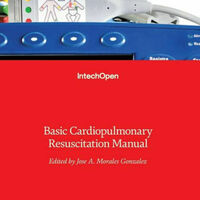Search
Books+
Searching 1,73 books
Search related to the career Ambulance Technician
Steps to Start a Career as an Ambulance Technician:
Educational Requirements:
To become an ambulance technician, you typically need a high school diploma or equivalent. However, some employers may prefer candidates with post-secondary education in emergency medical services (EMS) or a related field.
1. Research:
Gather information about the requirements and responsibilities of an ambulance technician. Understand the skills, certifications, and licenses needed for the role. Research local regulations and standards for ambulance services in your area.
2. Obtain CPR Certification:
Enroll in a CPR (Cardiopulmonary Resuscitation) certification course. This training is essential for anyone working in the healthcare field, including ambulance technicians.
3. Complete an EMT-Basic Course:
Enroll in an Emergency Medical Technician (EMT)-Basic course. This course provides the foundational knowledge and skills required to work as an ambulance technician. EMT-Basic programs are available at community colleges, technical schools, and some universities.
4. Gain Practical Experience:
After completing the EMT-Basic course, gain practical experience by volunteering or working as an EMT in a hospital, ambulance service, or other healthcare settings. This experience will help you develop your skills and gain exposure to real-life emergency situations.
5. Obtain EMT Certification:
Once you have completed the EMT-Basic course and gained the necessary experience, you can apply for EMT certification through the National Registry of Emergency Medical Technicians (NREMT) or your state's EMS authority. Certification requirements may vary by jurisdiction.
6. Apply for Ambulance Technician Positions:
Search for job openings as an ambulance technician in your area. Look for opportunities in private ambulance companies, hospitals, fire departments, or government agencies. Tailor your resume and cover letter to highlight your relevant skills and experience.
7. Prepare for Interviews:
Prepare for interviews by researching common interview questions for ambulance technician positions. Practice your responses and be ready to demonstrate your knowledge, skills, and ability to handle emergency situations.
8. Complete Additional Certifications:
Consider obtaining additional certifications to enhance your qualifications. Examples include Advanced Cardiac Life Support (ACLS), Pediatric Advanced Life Support (PALS), and Prehospital Trauma Life Support (PHTLS).
9. Maintain Continuing Education:
Stay updated with the latest advancements and best practices in emergency medical services. Participate in continuing education courses and workshops to enhance your knowledge and skills.
10. Pursue Career Advancement:
As you gain experience and expertise, you can explore opportunities for career advancement. This may include becoming a paramedic, supervisor, or instructor in emergency medical services.
Remember to check specific requirements and regulations in your area, as they may vary. Good luck in your pursuit of a career as an ambulance technician!
Source: Various AI tools
Vocational skills
Searched in English.


















































